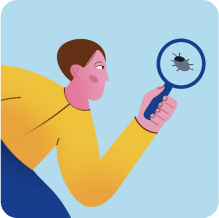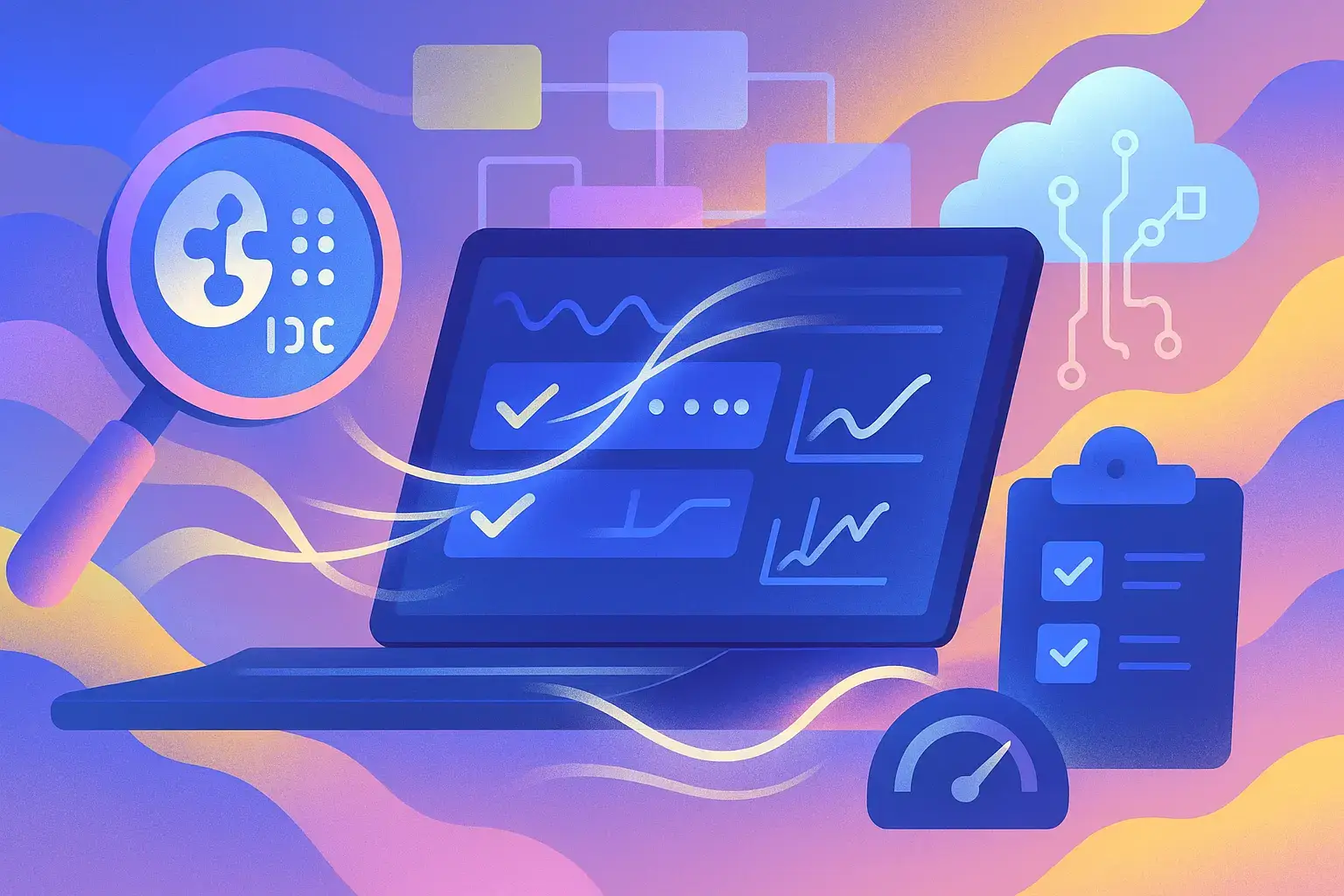The Benefits of Using AI in Accessibility Testing
AI is changing the way teams approach accessibility testing, and not just by speeding things up. Manual reviews used to be slow, repetitive, and easy to overlook edge cases. AI now makes it possible to scan entire websites or apps in minutes and catch issues that would take weeks to find by hand.
The biggest win is scale. AI tools can process thousands of pages at once and flag recurring patterns and accessibility gaps across your entire product. That kind of coverage is a game-changer for fast-moving teams or large websites with frequent updates.
AI also brings consistency. Unlike human testers, who might interpret accessibility guidelines slightly differently, AI applies the same standards across every component and screen. That’s essential when you’re trying to maintain accessibility over time, not just meet it once and forget about it.
Even better, many AI tools now go beyond surface-level checks. They simulate how people with disabilities actually experience your site, not just whether you’ve ticked the right compliance boxes. For example:
| AI Capability | Benefit to Accessibility Testing |
|---|---|
| Pattern Recognition | Identifies recurring accessibility issues across sites |
| Visual Analysis | Detects poor colour contrast and visual elements lacking proper descriptions |
| Semantic Understanding | Evaluates whether content makes logical sense to screen readers |
| Behavior Prediction | Simulates how assistive technology users will experience content |
| Ongoing Learning | Improves accuracy over time as more accessibility data is processed |
AI also makes it easier to test across browsers, devices, and assistive technologies all at once. Instead of recreating dozens of different environments manually, you get instant feedback on how your product performs for users in real-world scenarios.
Another major upside? Prioritisation. Modern AI tools don’t just report issues. They also rank them by severity. That helps developers focus on the fixes that actually improve user experience, not just rack up points on a compliance checklist.
And let’s not forget the cost impact. Catching accessibility issues early, like before launch, before redesign, before a lawsuit, is far cheaper than retrofitting accessibility later or scrambling to fix a problem under legal pressure. AI makes that early detection realistic, even for busy teams.
As we explore how AI is revolutionising accessibility testing, it’s worth considering how the right test management platform can amplify these efforts. aqua cloud seamlessly integrates AI capabilities into your testing workflow, helping teams generate comprehensive test scenarios for accessibility in seconds rather than hours. With aqua’s AI Copilot, you can quickly translate accessibility requirements into detailed test cases, ensuring nothing gets overlooked. This approach leads to 100% requirement-to-test-case coverage, critical when accessibility compliance demands thorough attention to detail. Teams using aqua save an average of 12.8 hours per week per tester by automating repetitive QA tasks, allowing more time to focus on the nuanced aspects of accessibility that still require human judgment. Integrations like Jira, Confluence, Jenkins, Azure DevOps, and automation frameworks like Ranorex, Selenium, Jenkins are the cherry on top. Whether you’re testing screen reader compatibility or ensuring keyboard navigation works flawlessly, aqua provides the structure to manage, track, and report on all your accessibility testing efforts.
Generate comprehensive, AI-powered accessibility test cases with one click with aqua
Leading AI Accessibility Testing Tools
Now that we’ve looked at how AI improves accessibility testing, the next question is obvious: what tools actually help you do it?
The good news: the space has matured fast. Whether you’re a tester, developer, product manager, or part of a compliance team, there’s now a wide range of AI-powered accessibility tools built for different workflows. Some focus on deep integration into your CI/CD pipeline. Others offer fast, visual feedback or even suggest automated fixes on the spot.
Here are some of the leading tools shaping how teams build more inclusive digital experiences:
| Tool Name | Key Features | Best For |
|---|---|---|
| All in One Accessibility | AI-powered accessibility solution supporting WCAG 2.0, 2.1, 2.2, EAA, ADA, and Section 508 compliance | SMEs, agencies, and organizations looking to quickly improve website accessibility and meet compliance standards |
| axe-core | Open-source engine that powers many other tools; supports programmatic accessibility checks | Developers integrating testing into build processes |
| Equally AI | Machine learning-based suggestions and one-click remediation for common issues | Non-technical teams needing quick fixes |
| AccessiBe | Front-end widget that scans and adjusts websites for accessibility | Small businesses with limited development resources |
| Google Lighthouse | Built into Chrome DevTools; audits accessibility, performance, SEO | Developers running quick accessibility checks |
| Deque Axe | Full suite including browser extensions, IDE integrations, and CI tools | Enterprise teams needing robust and automated testing |
| Level Access AMP | Prioritizes issues based on legal risk and compliance impact | Organizations focused on regulatory coverage |
| Evinced | Tests flows and user journeys, not just isolated pages | Teams aiming for end-to-end accessible UX |
| Microsoft Accessibility Insights | Visual testing assistant with annotated feedback | Designers and visual thinkers |
Many of these tools work together, rather than in isolation. For example, axe-core is open source and serves as the backbone for both Google Lighthouse and Microsoft’s Accessibility Insights. That means you’re often getting the same core engine, just wrapped in different workflows.
All in One Accessibility is an AI-based accessibility tool to enable websites to be accessible among people with hearing or vision impairments, motor impaired, color blind, dyslexia, cognitive & learning impairments, seizure and epileptic, and ADHD problems. All in One Accessibility installs in just 2 minutes. It reduces the risk of time-consuming accessibility lawsuits. It supports 140+ languages.
This widget improves accessibility compliance for the standards WCAG 2.0, WCAG 2.1, WCAG 2.2, ADA, Section 508, European EAA EN 301 549, Canada ACA, California Unruh, Israeli Standard 5568, Australian DDA, UK Equality Act, Ontario AODA, Indian RPD Act, GIGW 3.0, France RGAA, German BITV, Brazilian Inclusion law LBI 13.146/2015, Spain UNE 139803:2012, JIS X 8341, Italian Stanca Act, Switzerland DDA, and more.
Equally AI is especially useful for teams without deep accessibility knowledge. It doesn’t just flag problems; it also actively recommends (and sometimes applies) fixes, speeding up remediation for common issues.
For mobile apps, Google’s Accessibility Scanner deserves mention too. It uses AI and computer vision to analyse Android interfaces, spotting contrast issues, tap targets, and more, without needing to write a line of test code.
And if you’re looking to embed accessibility testing into your dev process, Deque’s axe DevTools can hook right into your IDE or CI environment, catching issues before they ever reach production.
Each of these tools brings something different to the table, depending on your goals. The key is to pick based on where accessibility fits into your process: early during design and development, or later for compliance and remediation. Either way, AI-powered testing makes it possible to scale accessibility without scaling cost or complexity.
Real-World Applications of AI in Accessibility
AI in accessibility is beyond automation or catching issues faster. It’s changing how companies design for real people. And when it’s done right, the results are more than just compliant, they’re genuinely useful.
Take Microsoft’s Seeing AI. It’s not a flashy demo, it’s a tool blind users rely on every day. Open the app, point your phone at a document or a face, and it tells you what’s there. It scans and describes. That kind of real-time narration, using computer vision and language models, helps people move through the world more independently.
Peloton made a smart move, too. Their AI-generated live captions now let deaf users follow high-energy workouts as they happen. The system keeps up with fast speech and odd terminology you’d only hear in a fitness class. It’s not perfect, but it’s made something that used to be exclusive much more open.
In finance, Bank of America didn’t make headlines with their accessibility work, but what they did matters. They added AI-based accessibility checks directly into their development flow. Since then, fewer bugs slip into production, and their apps meet accessibility standards more reliably. It’s not glamorous, but it’s what real progress looks like.
Over at the BBC, engineers focused on something most people overlook: accents. Traditional speech tools often trip up on regional dialects. So the BBC trained AI to better recognise and caption local voices. It learns from user corrections over time, which means captions get more accurate the more people use them.
Then there’s Google’s Live Caption feature. It doesn’t need an internet connection or any setup. If sound plays, it captions; whether it’s a video, podcast, or even a phone call. For people who are hard of hearing, that kind of instant support changes how they use their phone.
Airbnb approached things from a different angle. Rather than just asking hosts to say if their place is wheelchair accessible, they now use AI to scan photos and verify those claims. It’s a small thing, but if you’ve ever needed step-free access, it’s the kind of detail that makes or breaks a booking.
None of these examples is just about technology for the sake of it. They show what happens when teams use AI to make digital spaces genuinely more usable for everyone. Not as a patch, but as part of the product.
Challenges and Ethical Considerations of AI Accessibility Testing
One of the biggest challenges with AI in testing is the “black box” problem. Many AI tools make decisions that even their creators can’t fully explain. That becomes a problem when a tool flags (or misses) an issue, and no one knows why. Without transparency, it’s hard for teams to trust the results or improve based on them.
Another risk is overreliance. It’s tempting to lean too heavily on AI tools because they’re fast and scalable, but no system catches everything. Context still matters. An image might technically have alt text, but AI can’t always tell whether that description is actually useful for someone who can’t see the image.
That’s the heart of the issue: AI tools are great at checking boxes, but not always at assessing real usability. A website might pass every automated test and still be a frustrating experience for someone using a screen reader or keyboard.
Then there are the ethical concerns that go deeper than the code:
- Training data bias: If an AI were trained on datasets that don’t reflect the full range of disabilities or assistive tools, it may miss key issues for certain users.
- Privacy risks: Using session recordings for analysis raises questions about consent and data protection, especially when dealing with sensitive user populations.
- Replacing real feedback: Some companies skip user testing entirely, assuming AI can do it all. That leads to designs that meet standards but fail people.
- Inconsistent results: Different AI tools may give conflicting feedback for the same content, making it unclear what “accessible” actually means.
- False negatives: When AI tools miss real barriers, teams may assume everything’s fine—until users say otherwise.
That’s why human judgment still matters. The most reliable approach blends different layers of testing:
- Use AI to find obvious, repeatable issues fast
- Follow up with expert reviews for context and edge cases
- Involve real users with disabilities to validate the experience
- Train dev teams so accessibility becomes part of how they think, not just something they test for
AI has a lot to offer, but it works best when it supports—not replaces—the people building and using the product.
Future Trends in Accessibility Testing with AI
The way we approach accessibility is shifting fast, and AI is right at the centre of that change. What started as a way to automate checks is now turning into a deeper, more meaningful way to build inclusive digital products. Here’s a look at where things are headed.
One of the biggest shifts is real-time remediation. Instead of just flagging issues, AI tools are starting to fix them on the fly. Right now, that might mean generating missing alt text, but it’s moving toward more complex changes like restructuring navigation or adjusting layouts to work better with screen readers. The more AI handles, the easier it becomes for teams to keep accessibility in place as products evolve.
We’re also starting to see personalised accessibility powered by AI. These systems will adapt to individual users. For example, someone using a screen magnifier might automatically get a layout optimised for smaller viewports. A user with tremors could see touch targets increase in size without changing settings manually. It’s accessibility that adjusts in real time, based on how people actually interact.
Another exciting development is predictive accessibility analytics. By analysing design patterns and planned code changes, AI will be able to flag issues before anything is built. This pushes accessibility earlier in the process; before testing, before development, right at the design stage. It’s a shift-left approach that saves time and helps teams build with inclusion in mind from day one.
Then there’s augmented reality for accessibility testing. It’s a concept that’s still early, but full of potential. Imagine wearing AR glasses that simulate different visual impairments while you build or review a UI. It’s one thing to read a WCAG rule, but it’s something else entirely to experience your own product the way someone with low vision might. That kind of immersion could reshape how teams think about inclusive design.
Advances in natural language processing are also changing how we assess content. Future tools won’t just check contrast and headings. They’ll analyse tone, readability, and cognitive load. They’ll suggest simpler wording, better structure, and more inclusive language. That’s a big step for users with cognitive disabilities, language learners, or anyone relying on translations.
We’re also moving toward multimodal AI analysis. Instead of testing elements in isolation, future systems will evaluate visual, interactive, and semantic aspects together. They’ll understand how pieces work as a whole: how a user moves through a flow, not just whether one button meets contrast requirements.
Finally, and maybe most importantly, accessibility testing will get fully integrated into how teams work. We’ll see AI baked into design tools, IDEs, and CI/CD pipelines, offering feedback as code is written or layouts are sketched. This integration means accessibility becomes part of the rhythm of development, not a separate checklist you run at the end.
Here’s how this evolution looks side by side:
| Current Approach | Where We’re Headed |
|---|---|
| Finding issues after development | Automatically fixing issues in real time |
| Standard compliance | Personalised user adaptations |
| Post-launch audits | Early design-phase prediction |
| Technical rule checking | Real usability and experience feedback |
| Separate accessibility tools | Built-in design and dev tool support |
| Static element testing | Dynamic user journey analysis |
All of this is promising, but it’s not a replacement for human input. The best results will still come from combining AI with real user testing and inclusive thinking from the start. AI should help teams go further, faster, but people should always stay at the centre of the process.
Conclusion
If you’re serious about building digital products that work for everyone, accessibility can’t be an afterthought. AI tools are making it easier to spot issues early, test at scale, and fold accessibility into everyday development, not just audits. But they’re not the full answer. The real impact comes when you also involve real people with disabilities and treat accessibility as an ongoing part of how you build. Start with one tool, try it out in your workflow, and don’t worry about getting it perfect. What matters is moving in the right direction. Inclusive design benefits everyone, and it starts with the steps you take today.
As we’ve seen, AI is transforming accessibility testing from a compliance checkbox to an integrated part of the development process. However, having the right platform to manage this evolution is crucial. aqua cloud offers a comprehensive solution that complements the AI accessibility tools discussed in this article. With aqua’s AI-powered test generation, you can create accessibility test cases from requirements in seconds, saving up to 97% of time typically spent on manual test creation. The platform’s centralised approach ensures all accessibility issues are documented, tracked, and resolved within a single ecosystem. Powerful dashboards provide visibility into your accessibility coverage and compliance status, while integration capabilities let you connect with specialised accessibility testing tools for a complete testing strategy. By combining aqua’s test management capabilities with modern AI accessibility tools, teams can achieve the perfect balance of automated efficiency and human expertise, making digital inclusion a reality rather than just an aspiration.
Achieve 100% accessibility requirement coverage while saving 12.8 hours per week per tester


















